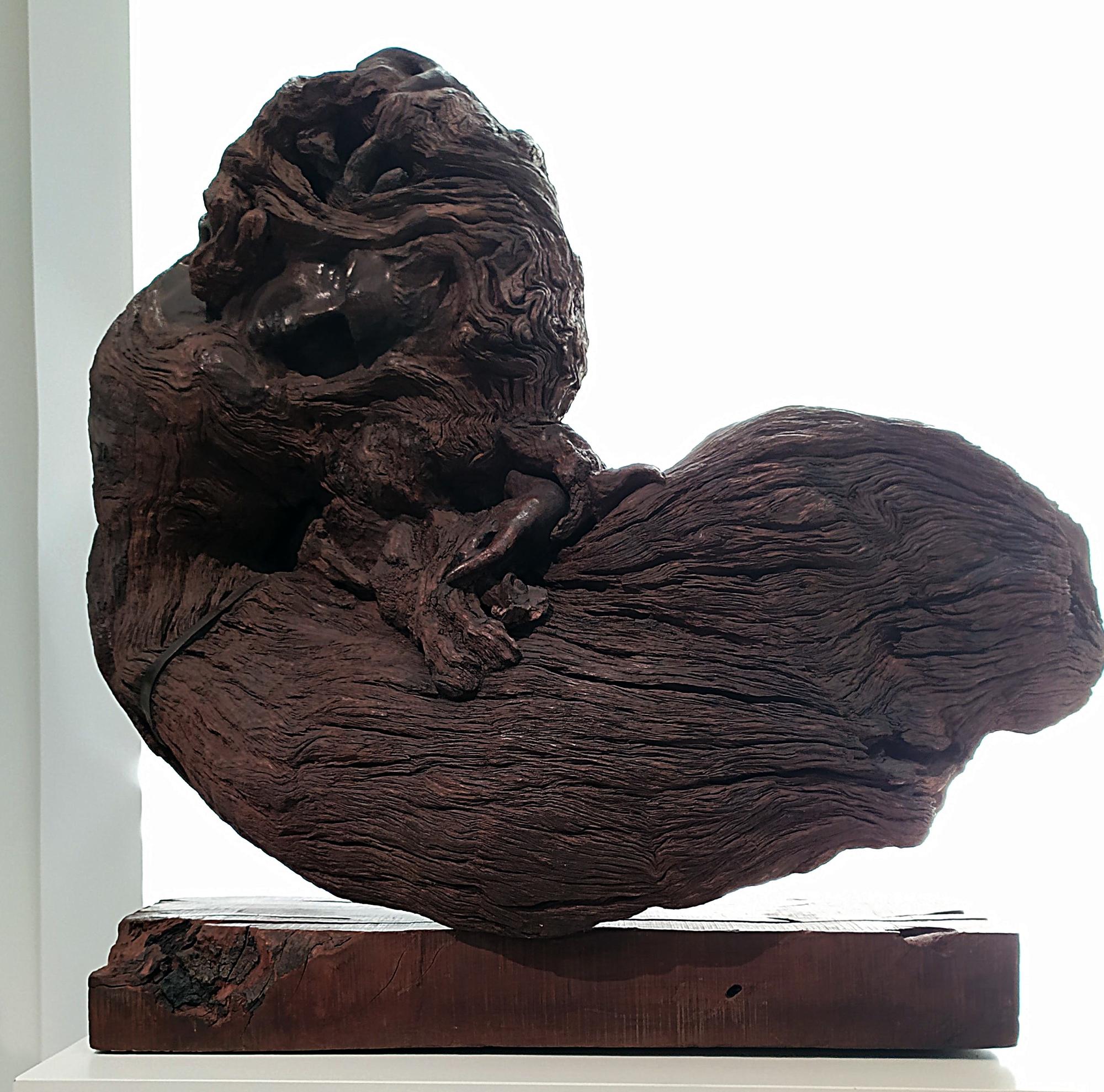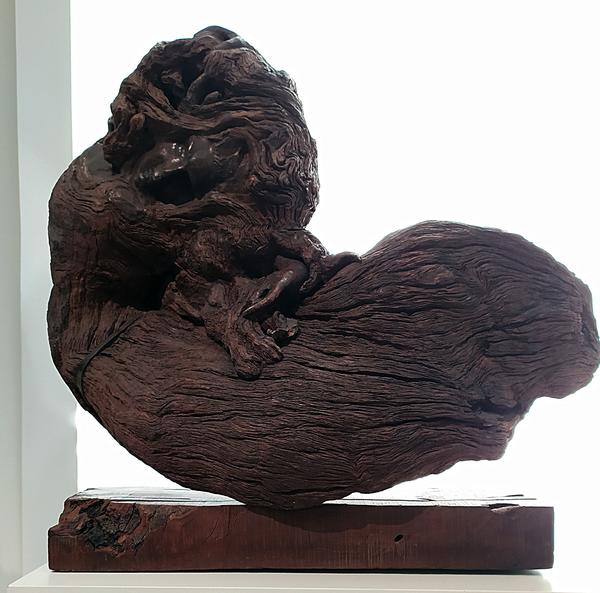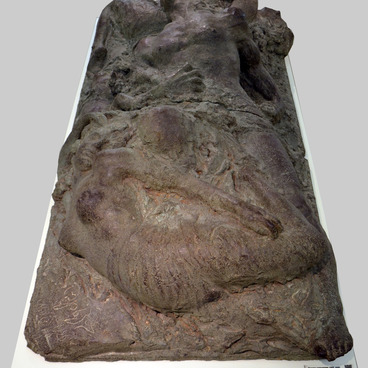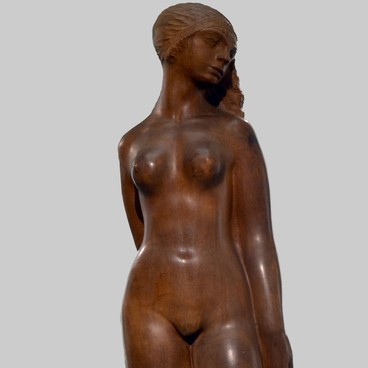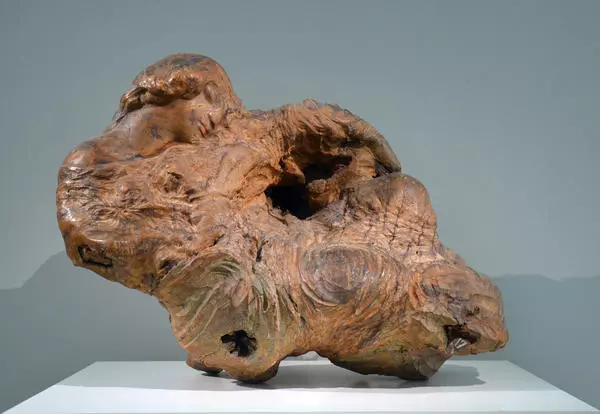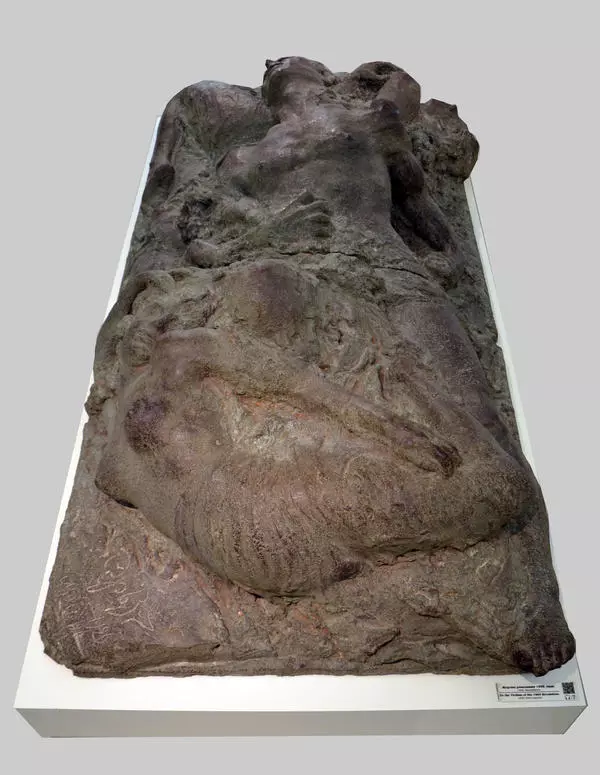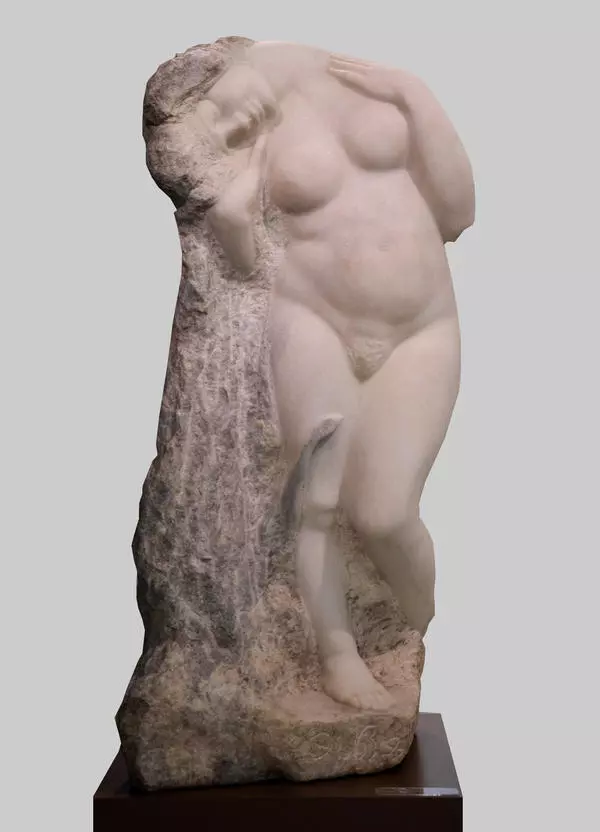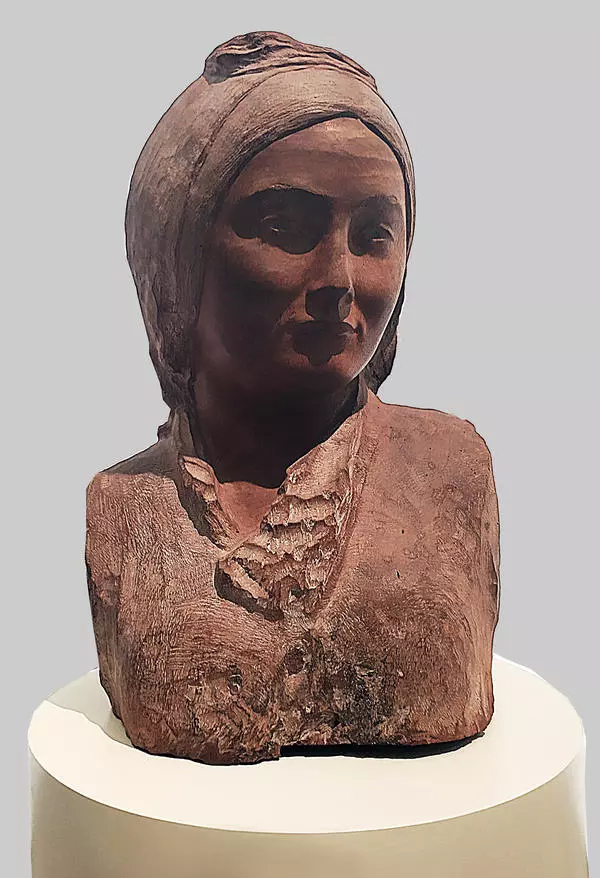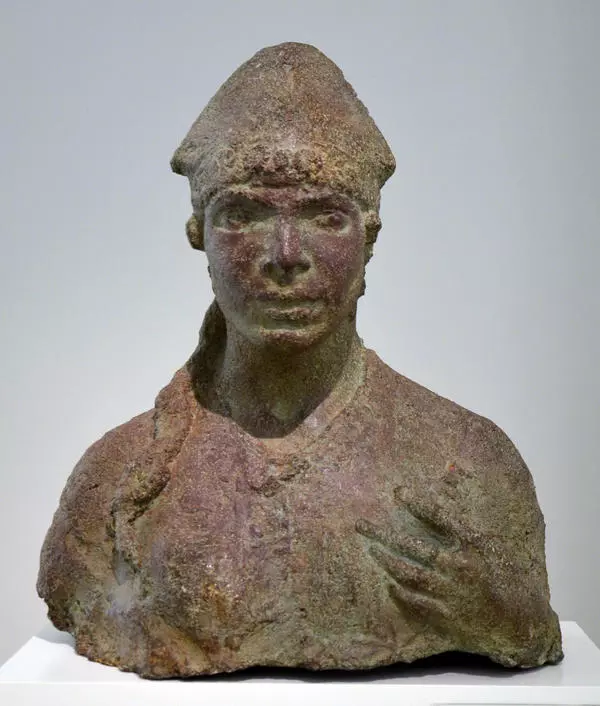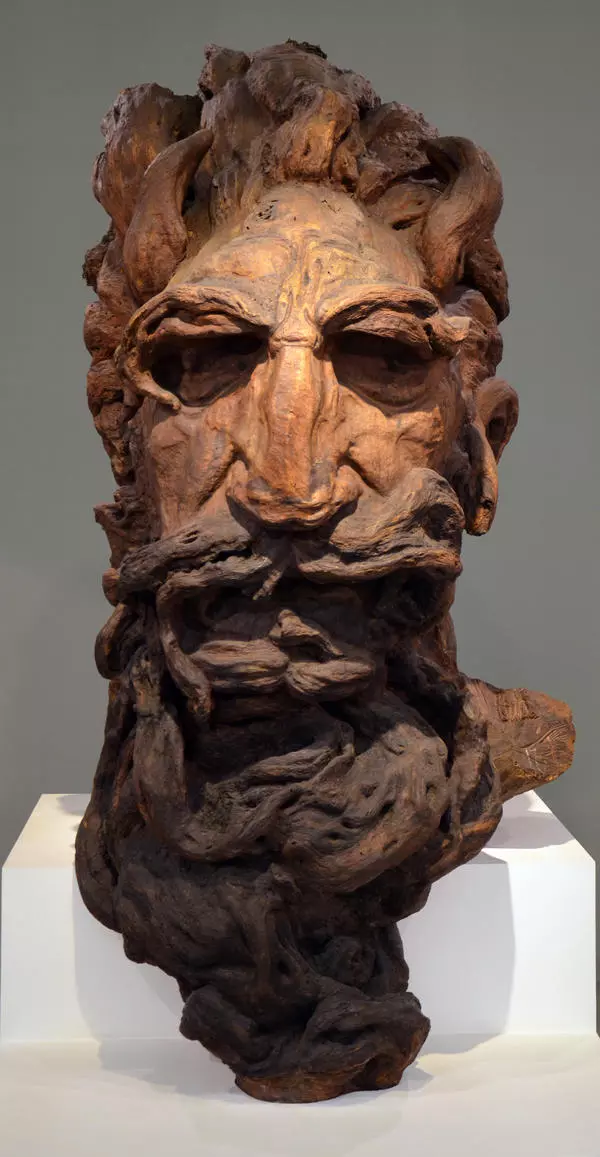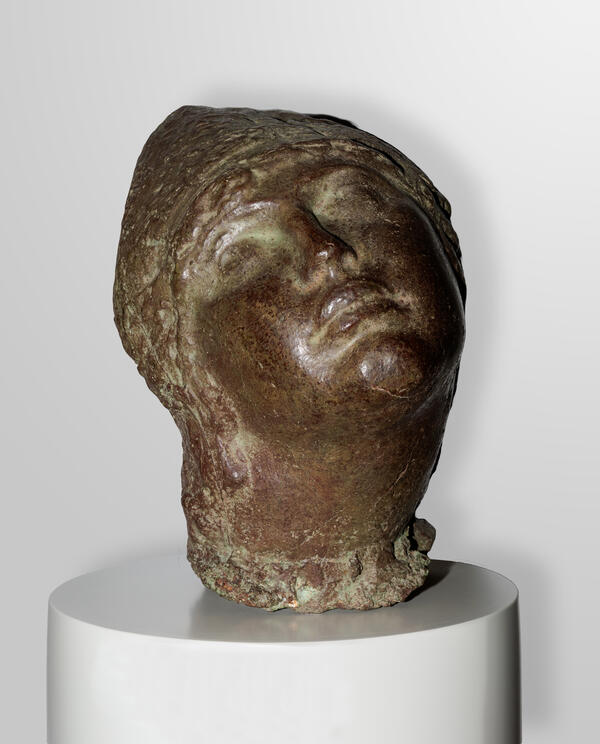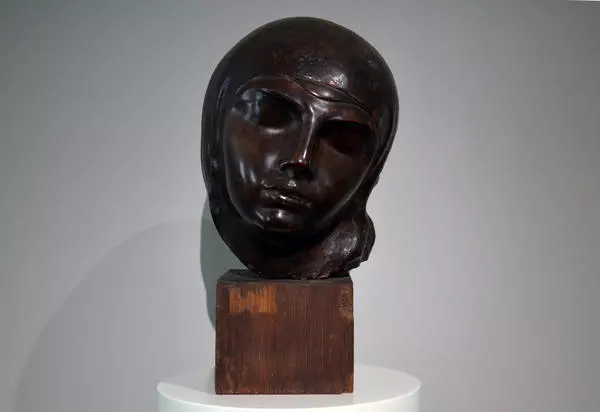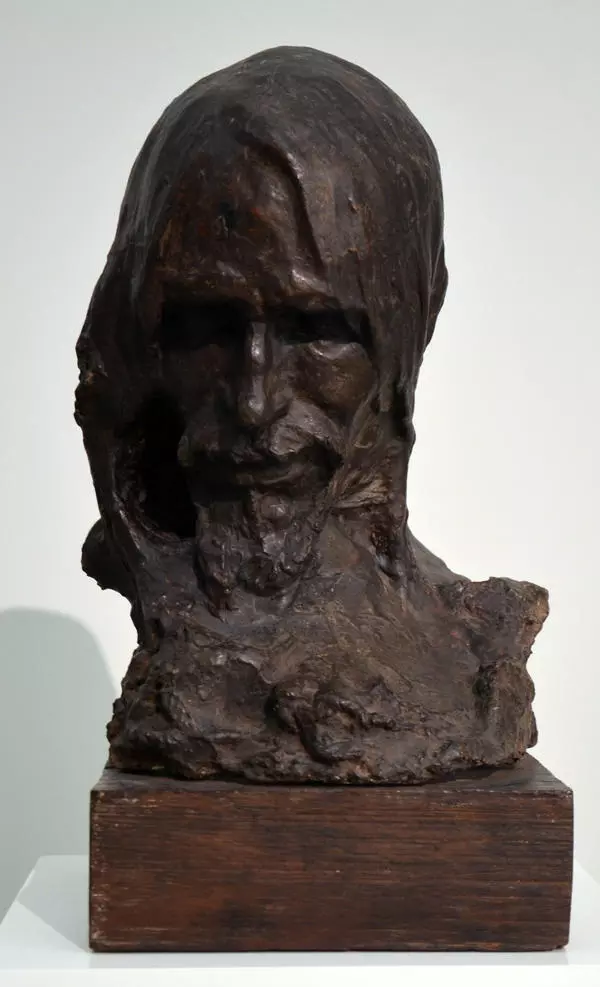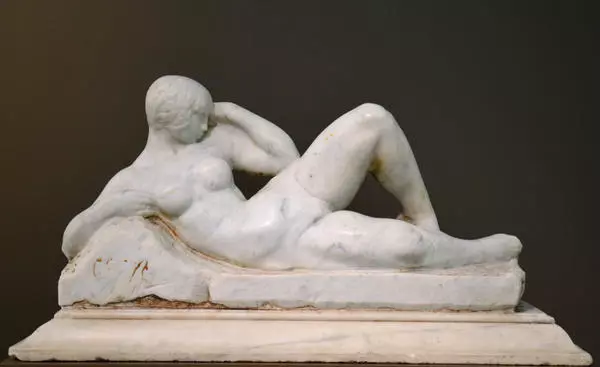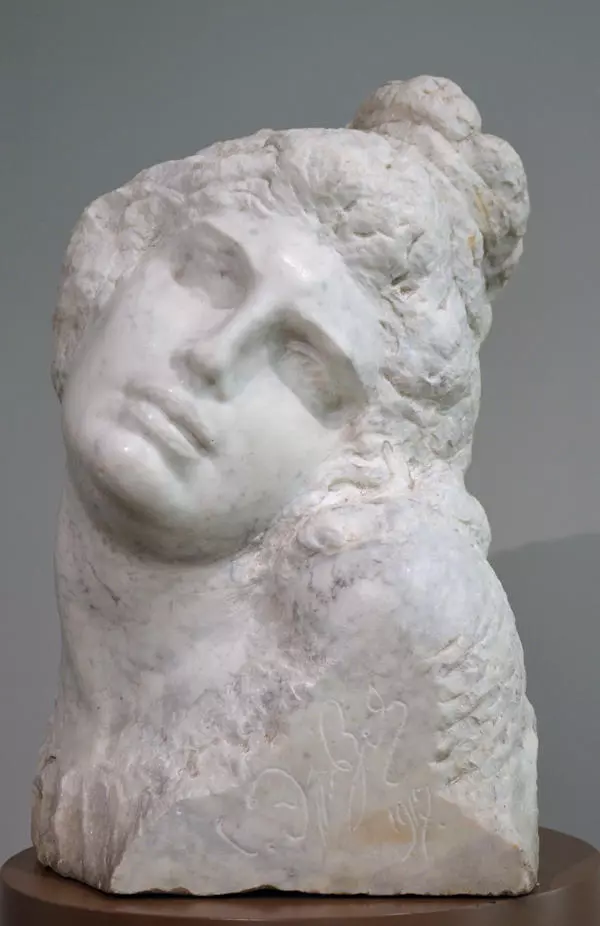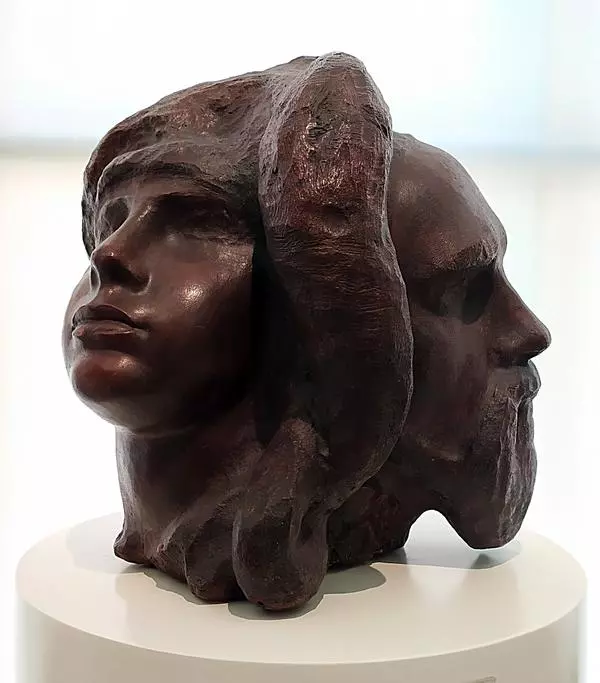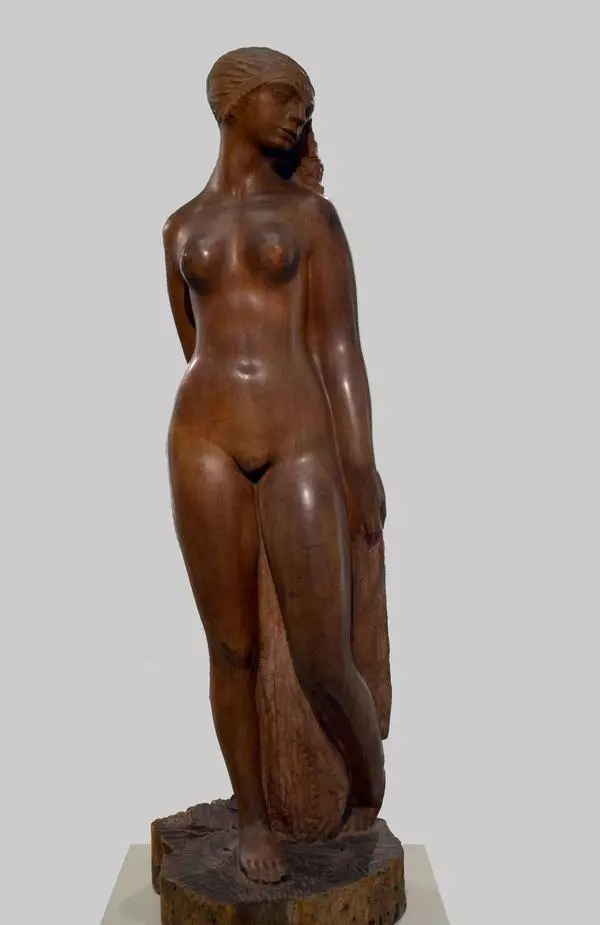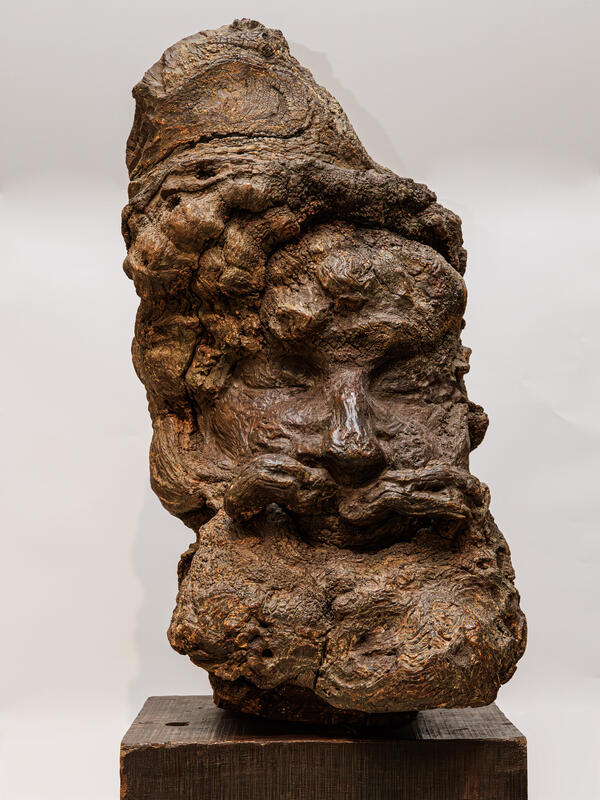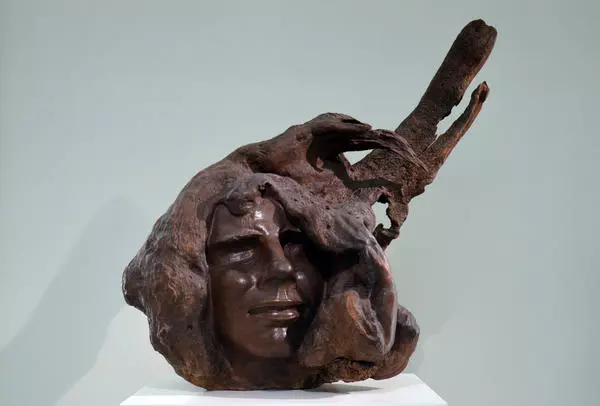Stepan Erzia was a many-sided sculptor skilled in working with both man-made and natural materials: cement, reinforced concrete, stone, and wood. The longest creative period in his life was the Argentinian one, when his favorite material was quebracho, extremely strong and firm wood of some sub-tropical trees that is very hard to cut but that has undeniable merits from the artwork point of view, as it has extravagant natural shapes and a variety of colors. The tones of quebracho range from light yellow to dark brown. Wood carving was not easy for the artist, and Stepan Erzia spent years developing and mastering his woodcutting technique.
Fantasy, his sculpture created in 1927, was one of his first quebracho works. One may find some motifs from his previous pieces in it. From the style and image viewpoint, it is close to Flying, the sculpture created when Stepan Erzia lived in the Caucasus. Using minimal plastic means and a well-selected wood gnar, the master succeeded in making Fantasy highly expressive while emphasizing the peculiarity of the natural material. The wood seems to have prompted the composition and the rhythmic solution.
In the piece of wood, the sculptor saw a girl’s figure. He only outlined the shape, leaving the rest of the job to the imagination of the viewers. The master only detailed out the face and the palm of her hand and did not touch the natural forms of the material, as if fearing that indiscreet intervention might ruin their harmony. Stepan Erzia called his method of work “cooperation with nature”. In Fantasy, the artist harmonically combined the texture of the wood and the delicate female image.
Stepan Erzia cared little about personal comfort, but was always demanding to the environment that was to facilitate pursuing arts. In Argentina, all the necessary conditions were in place: attention from the press, benevolence of the authorities, sincere interest and admiration in relation to his works - all of this helped the artist to adjust to the new culture.
The Argentinian period was the time of creative rise for the master. It was the longest one in his evolution as a sculptor. In Argentina, Stepan Erzia demonstrated the previously unusual consistency in choosing material for his works. This is where he found wood that was a perfect match to his requirements - the quebracho.
Fantasy, his sculpture created in 1927, was one of his first quebracho works. One may find some motifs from his previous pieces in it. From the style and image viewpoint, it is close to Flying, the sculpture created when Stepan Erzia lived in the Caucasus. Using minimal plastic means and a well-selected wood gnar, the master succeeded in making Fantasy highly expressive while emphasizing the peculiarity of the natural material. The wood seems to have prompted the composition and the rhythmic solution.
In the piece of wood, the sculptor saw a girl’s figure. He only outlined the shape, leaving the rest of the job to the imagination of the viewers. The master only detailed out the face and the palm of her hand and did not touch the natural forms of the material, as if fearing that indiscreet intervention might ruin their harmony. Stepan Erzia called his method of work “cooperation with nature”. In Fantasy, the artist harmonically combined the texture of the wood and the delicate female image.
Stepan Erzia cared little about personal comfort, but was always demanding to the environment that was to facilitate pursuing arts. In Argentina, all the necessary conditions were in place: attention from the press, benevolence of the authorities, sincere interest and admiration in relation to his works - all of this helped the artist to adjust to the new culture.
The Argentinian period was the time of creative rise for the master. It was the longest one in his evolution as a sculptor. In Argentina, Stepan Erzia demonstrated the previously unusual consistency in choosing material for his works. This is where he found wood that was a perfect match to his requirements - the quebracho.
